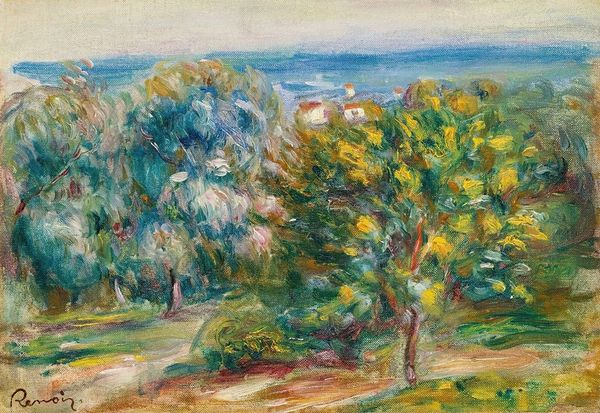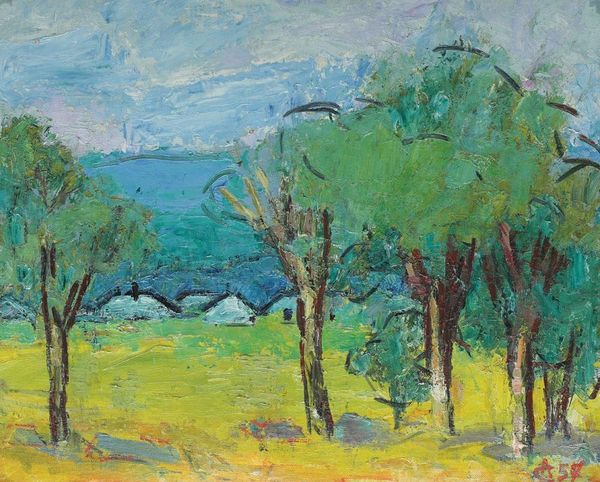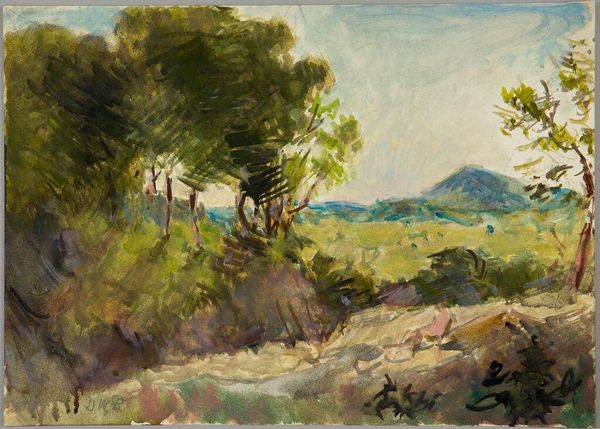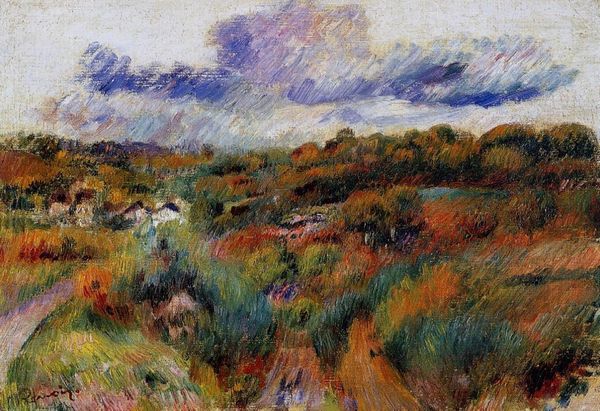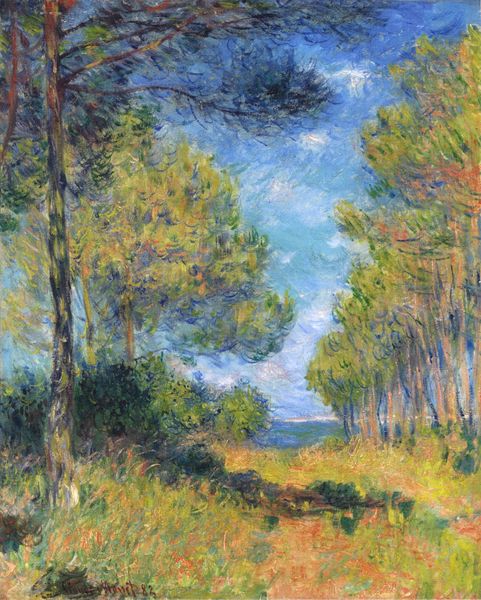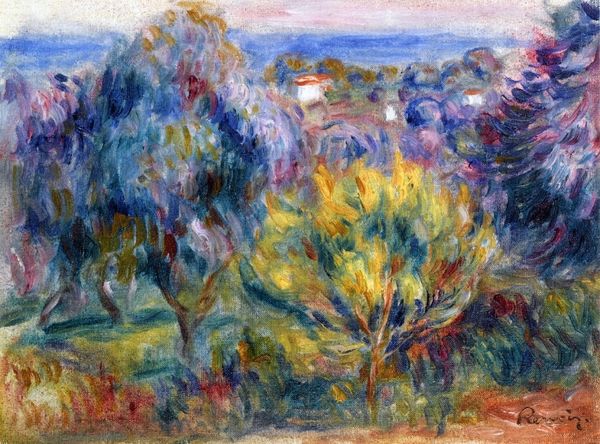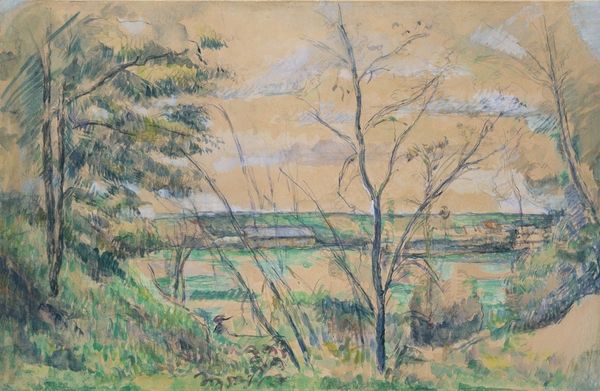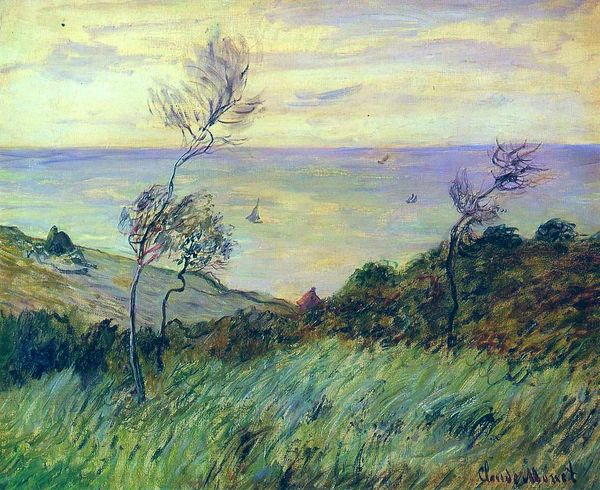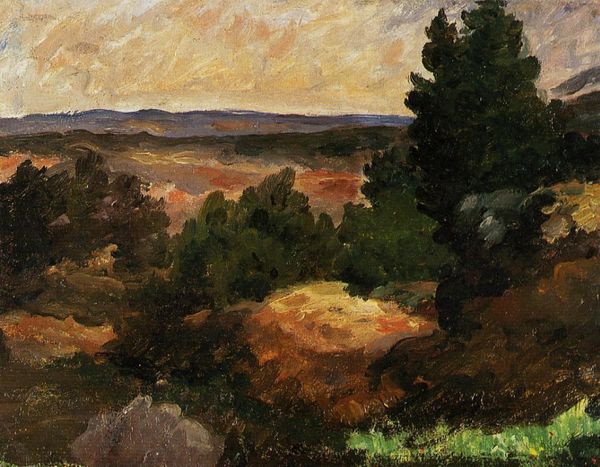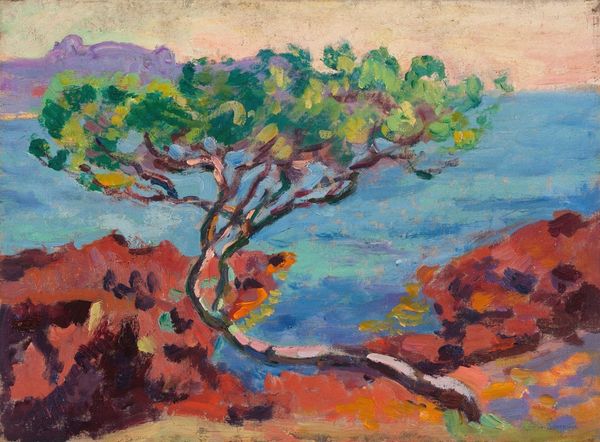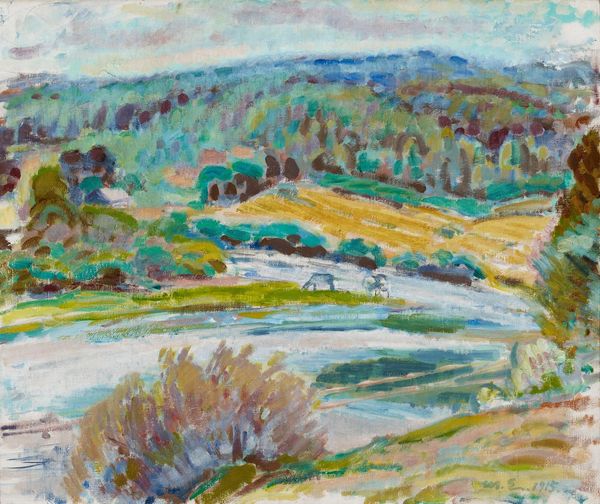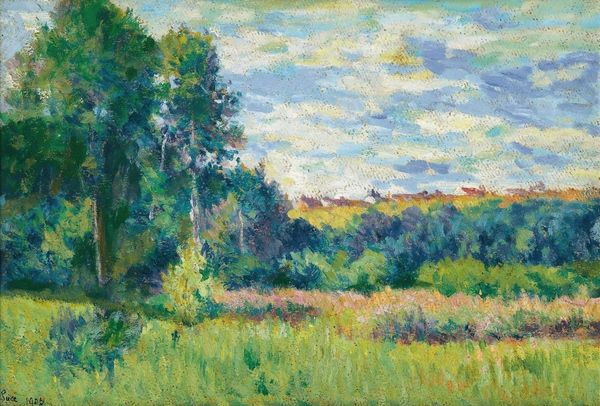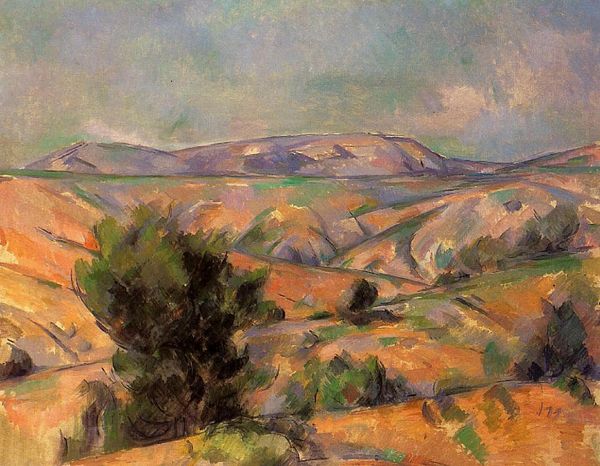
Copyright: Public domain
Curator: This is Pierre-Auguste Renoir’s "Pines in the Vicinity of Cagnes," painted around 1910. It's a late-period landscape done in oil. I'm immediately drawn to how vivid and lively this painting feels. The layering of colours and visible brushstrokes really gives it a palpable energy. Editor: Energy, yes, but I’m seeing a sort of practiced casualness too, as if Renoir wasn’t interested in highly-rendered detail so much as he was focused on getting a specific, tactile sensation of the landscape, likely "en plein air." What's particularly compelling to me are those pines— they aren't just passively there, they dominate the frame, drawing your eye around the pictorial space and acting almost as barriers between us and the nature presented within. Curator: I think that focus shifts as Renoir aged. He had increasingly severe rheumatoid arthritis during this period. The broad brushstrokes and vibrant palette might well reflect his physical relationship to painting, the conditions of his body informing the output. In this period Renoir's success was also assured. This allowed him to further explore his immediate surroundings— his life and art increasingly interwoven. Editor: And how that intertwining affected his use of materials. Looking at the canvas texture that peaks through, you see how materiality pushes the boundary of this landscape. The application is far from subtle. It’s as if the sheer act of applying the paint becomes the subject, less about illusionism and more about a tangible experience with the landscape and of painting itself. He also had access to materials that many before him never did, thanks to industrial production. Curator: It’s fascinating to think about that physical engagement shaping the work, as opposed to a more traditional artistic intention of conveying some ideal vision. One gets a clear sense of place. The South of France becoming almost synonymous with the aging artist. His works were becoming a type of lifestyle imagery. Editor: Exactly, and that lifestyle imagery would be propagated and made into an idealized consumption—art acting as the medium through which aspiration takes physical form in objects. That tension gives the painting a real weight, a grounding in both material reality and social production. Curator: I agree, that dual reading definitely enriches our understanding of this piece. Thank you for highlighting that crucial dimension! Editor: Likewise. I appreciate how you connected his biography with these socio-historical layers and brought an awareness of its physical context to the forefront.
Comments
No comments
Be the first to comment and join the conversation on the ultimate creative platform.
